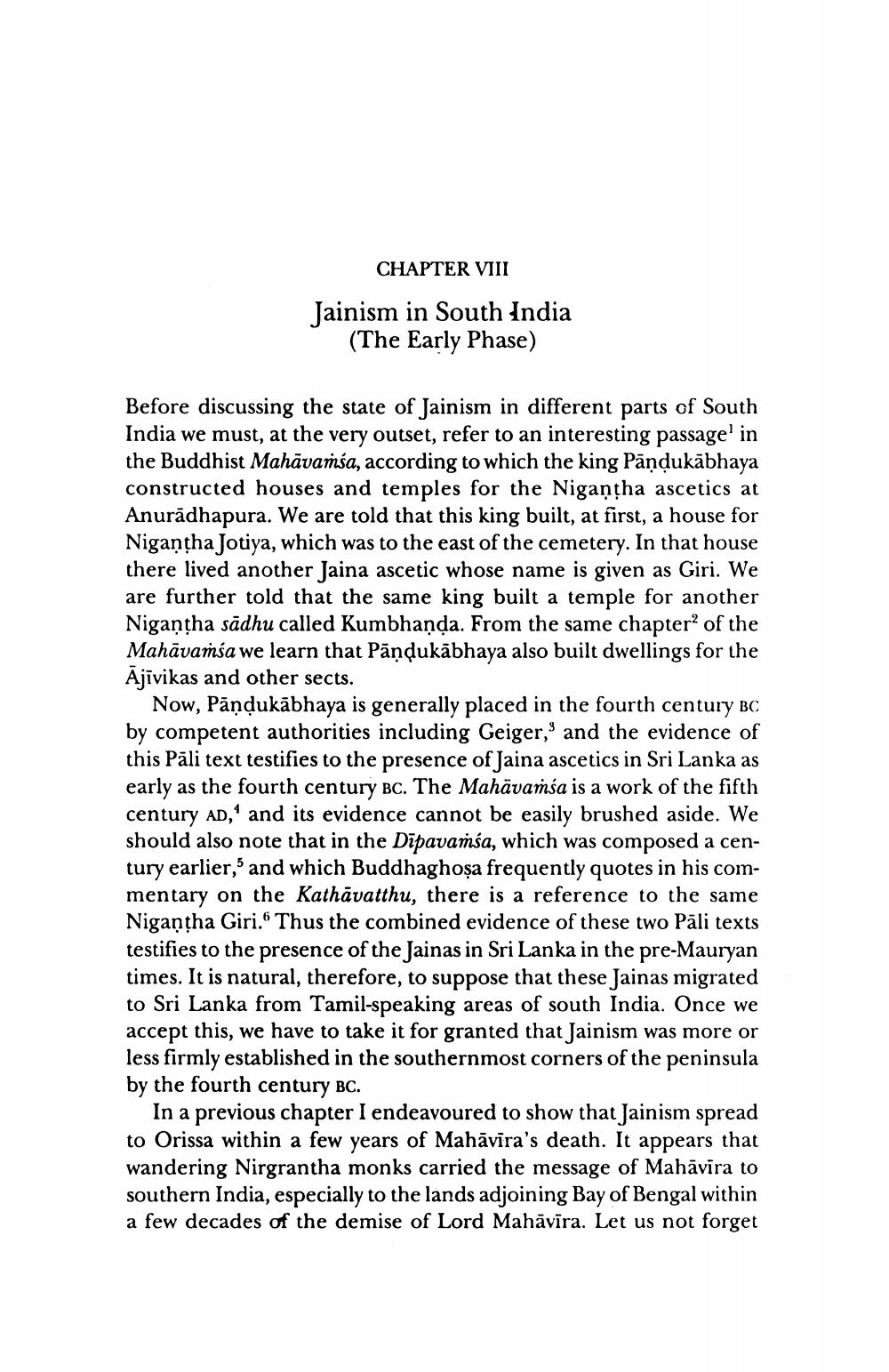________________
CHAPTER VIII
Jainism in South India
(The Early Phase)
Before discussing the state of Jainism in different parts of South India we must, at the very outset, refer to an interesting passage in the Buddhist Mahāvañía, according to which the king Pāņdukābhaya constructed houses and temples for the Nigantha ascetics at Anurādhapura. We are told that this king built, at first, a house for Nigantha Jotiya, which was to the east of the cemetery. In that house there lived another Jaina ascetic whose name is given as Giri. We are further told that the same king built a temple for another Nigantha sādhu called Kumbhanda. From the same chapter of the Mahāvamśa we learn that Pandukābhaya also built dwellings for the Ajīvikas and other sects.
Now, Pāņdukābhaya is generally placed in the fourth century BC by competent authorities including Geiger, and the evidence of this Pāli text testifies to the presence of Jaina ascetics in Sri Lanka as early as the fourth century BC. The Mahävamsa is a work of the fifth century AD,' and its evidence cannot be easily brushed aside. We should also note that in the Dīpavamsa, which was composed a century earlier, and which Buddhaghoșa frequently quotes in his commentary on the Kathāvatthu, there is a reference to the same Nigantha Giri. Thus the combined evidence of these two Pāli texts testifies to the presence of the Jainas in Sri Lanka in the pre-Mauryan times. It is natural, therefore, to suppose that these Jainas migrated to Sri Lanka from Tamil-speaking areas of south India. Once we accept this, we have to take it for granted that Jainism was more or less firmly established in the southernmost corners of the peninsula by the fourth century BC.
In a previous chapter I endeavoured to show that Jainism spread to Orissa within a few years of Mahāvira's death. It appears that wandering Nirgrantha monks carried the message of Mahāvīra to southern India, especially to the lands adjoining Bay of Bengal within a few decades of the demise of Lord Mahāvira. Let us not forget




